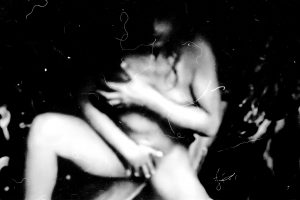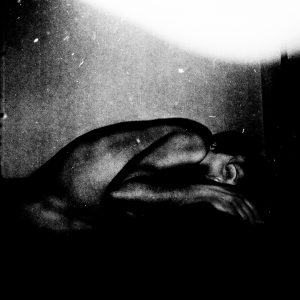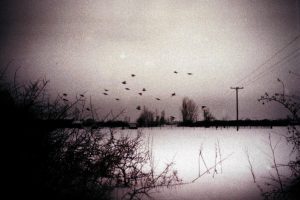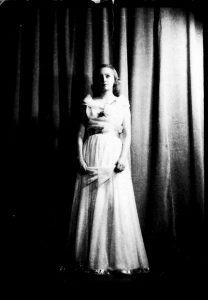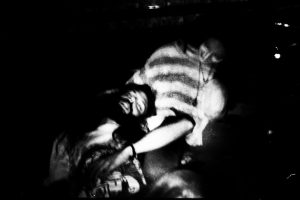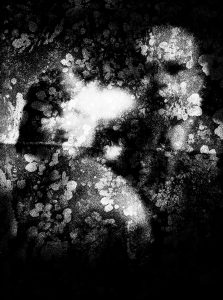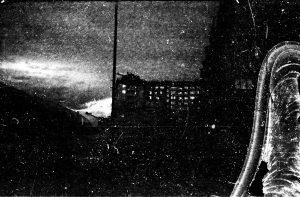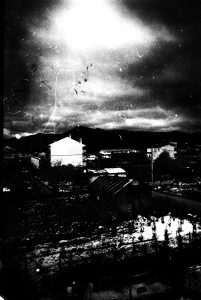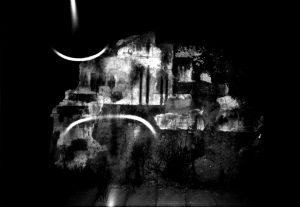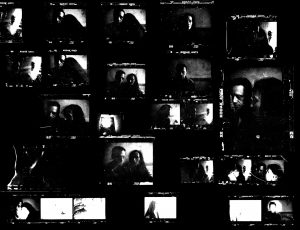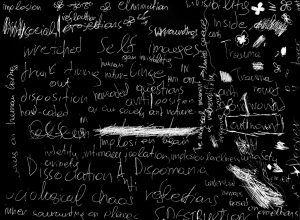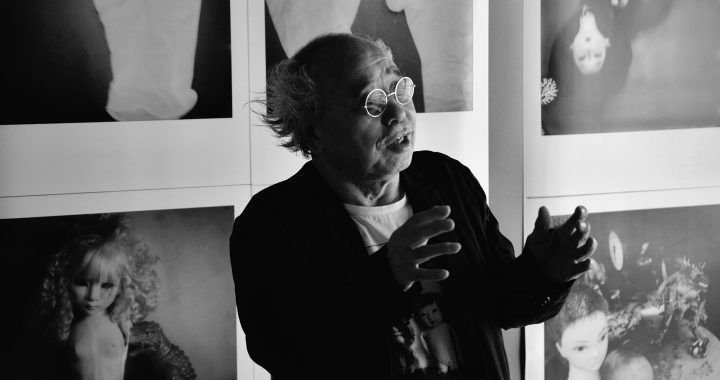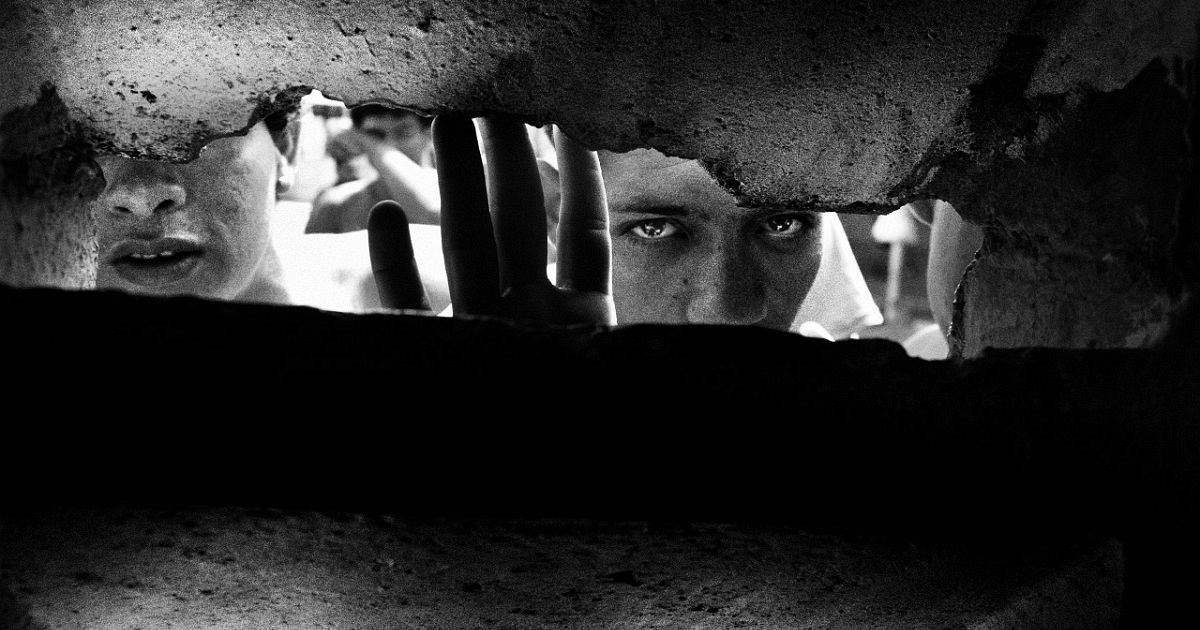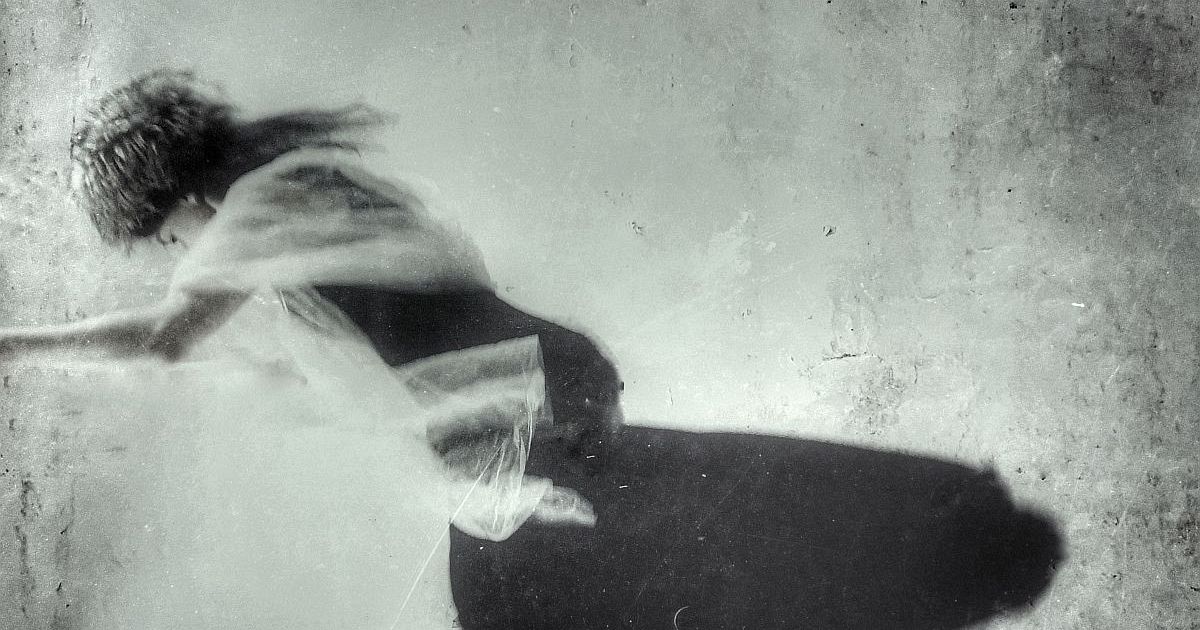A story of a young and lost person trying to feel free and find love. An emotional exploration of the human condition. An effort to understand how we express freedom, intimacy, closeness; how we seek true connection with the inner self and the other.
How do you perceive the progress of Greek contemporary photography today?
That’s an interesting question. Last December (2018) I went to Brusells together with my friend from Athens – Panos Kefalos, where they invited us from a nice organization called Recyclart to present our works and share our personal stories. They had been doing these presentations for many years (Extra Fort talks) and decided to end them. Our night was their last night and they wanted to do a greek night. It was really beautiful and I mention this because people at the talks were asking the same question as you and seemed to be so eager to discover photographers from Greece, especially young. Truth is that I am not sure if I can answer and talk clearly about all this because then I would have to identify and categorize voices in photography just with regional criteria, and I think that I am not the right person to do this mainly because I like to think outside of any border. But, what I can tell you is this. There are so many talented people working with photography in Greece!
What does return to analog mean to you?
I come from the digital generation so when I started taking pictures it was with a digital camera. It was good at that time because I didn’t have any technical constraints and sometimes this is important because it boosts your creativity and makes you feel free. But after a while, I had the need to go deeper into every aspect of what I was doing with pictures and photography. I did not like the fact that I was unable to touch my pictures until prints were made from the computer. And also, after a while when I was transferring files from the camera to the computer, i was diving into option paralysis. Briefly, its a state where you think that you have so many possibilities to explore and you are eager to explore them all, but you end up doing nothing because you don’t know how and where to start. So, after a while, I did not like the idea that my pictures were born out of ones and zeros. Also, all of the photographers that I was feeling connected to and inspired me were working on analog. So I decided that I should change my approach. Then I bought my first film camera, which I still use. When I started working on film, I realized that this is what I wanted. But this is only just a matter of taste and what fits better in your way of thinking and working. For my part, it is really important when I hold the film in my hands the moment after it is developed while looking at the pictures for the very first time. Another key factor is that you can choose the time gap, between the moment you take the picture and the moment you develop the film. I prefer those gaps to be long enough, so I could be detached from the encounter and the emotional state I am in. Sometimes this is helpful to make better decisions. It is not very easy, especially if I really want to see the pictures, but I am learning to be more patient and appreciate those time gaps. Nowadays i develop my films once a year, every summer. But I think that it is really important here not to be dogmatic. It is just a matter of personal taste after all. I prefer it when the past is being developed out of silver.
Dirt left and the form of expression with it is why it is so visible?
I like small accidents and mistakes. When you see dirt, scratches, and dust in Over.State, you see accidents happening on film and their accumulation over time. At that time, I did not have any proper way of archiving and storing my negatives so I just lived with them. They were everywhere in my room. I liked how I could see a frame just for a second and then do something else. Or how I could see the rolls that were hanging from my closet. I think this is the way for the pictures to become real and be part of our complex reality and everyday life. In those films, almost every frame had a unique accident. I liked that, and at this work, I let that happen a lot because I wanted to include an extra layer of harshness and imperfection. This imperfection on materiality is important for me as it transcends and brings on the surface the emotions and the sensations of imperfection and fragility coming from the voices of people photographed and also from my distorted voice, which is what this work is trying to convey.
Are you part of MONO 2. What does this mean to you?
Well, I prepared a submission for MONO v.2 when it launched and I was lucky enough to find out that it was one of those that made it to the book. What I can say? I am thankful to Gomma and people involved not only for that particular decision but also for the support and encouragement they showed during that period. MONO is a very beautiful book and many people discovered my work because of this. It also led to some projects with people I was lucky enough to work with because they knew my work from the book.
Do you have a favorite author from this edition?
I think that there are some very beautiful works inside this book. Of course, an obvious choice is to say Daido Moriyama but if we exclude that option I could answer you Lorenzo Castore. But please note that I am not choosing something over something else, every voice has its beauty. It is just that with Lorenzo’s work and books I feel personally connected and inspired by for a long time.
What does emotion mean to you in photography?
Almost everything. Especially in Over.State, where this urgency to convey emotional states, was present all the time and in every aspect of it. I wanted to transmit all those explosions of emotion in the way I was experiencing them. And this was very much present in my personal life and in every encounter I had. But also, when I am now showing the work I am really afraid of the possibility that all this could become a collection of screams and echoes loud enough that you may sometimes lose the words and sentences they are trying to transmit. So it’s a bit difficult because you have to pay attention and work on balancing everything. And to make a connection with a previous question, it is the same thing when you „letting” imperfection and harshness be present on the picture. It is very easy to lose balance and create something that feels emotionally blurry. There is also something else that has been worrying me and I find it crucial. That sometimes it’s important if we just whisper instead of scream. And that maybe there is a way to convey and express something very strong, just with a small whisper. This is important for me and this thought is also essential in terms of improving my work and approach. Nowadays i am trying to be calmer and take more time. In my new work, I am trying to be more accurate while exploring those whispers.
Many female portraits and still lifes in pictures. Why this connection?
Actually, I am not sure if that is s the case in Over.State. Of course, you can see many aspects and moments of my personal life and from personal encounters, I had with friends. And I don’t think that there is any connection with still life pictures. For me, those pictures represent something like <<non-spaces>> coming out of various transits. But when you edit and sequencing the pictures it is important not to lose balance because then you could end up with something that becomes melodramatic and this not very good.
For eight years you worked on a book Over.State that will be out in September. What were the years?
The first years were all about developing the work. It started slowly as a small collection of pictures that were trying to convey something different from the other pictures I had. I started slowly working more on that and exploring it. I realized then that those pictures were born out of encounters and fragility. But I had the need to meet and connect with people, and it became something very urgent. All I wanted to do was to connect and feel closeness. And photography was the only way I could do that. At that period those pictures were becoming the most important thing in my life. Something that I really need to protect and keed safe. I wasn’t very sure what was all about, but I let my instinct drive. It then took me a couple of years to find a way to build let’s say the first edit properly so I could eventually show it to some friends. After that, I kept working on more pictures while editing and printing the older ones. I was obsessed with this diptych, make new pictures-make new prints. Slowly I started receiving some positive feedback from friends. And also I received positive feedback and encouragement from photographers that I was feeling very close to. I was lucky enough in 2014 to get a scholarship to attend the workshop The Personal Narrative with Michael Ackerman and Adam Cohen in Berlin. I remember very clearly how I was unable to sleep at nights before the workshop, horrified by the idea that it may not go well. But it went. And it’s unbelievable how strong the impact was from this experience. It completeley changed me. Both in terms of work and as a person. After that, I decided that I did not want to wait forever until I find a proper way to make this work a book. I wanted to expose my self and the work, to get as much feedback as possible. To have both my presence and the work into one living organism that will be able to change and mature. And I think it is very helpful if you accept and come in peace with the imperfections of yourself and of the things that you create. And I think this type of early exposure helped me to become a better person in many ways. I think it is very important to get as much feedback as possible and to be open. And of course, I am always learning new things. But then last year, I decided that I want to move forward. I was realizing slowly that Over. State was coming to an end. Also, I had started making new work that was trying to express and convey different things. So that circle -Over. State- ended. My vision and interpretation of it had become more solid, certainly, I could not make any more pictures for it, I didn’t want to change anything else on the edit and I wanted to move on. So with all these in mind, I had some conversations with Blow Up Press. I very much admire their approach and direction, and they had been making really beautiful books. And I was very happy to realize that we had the same vision and approach. And that’s pretty much how the work is taking its final form becoming a book.
What is the main idea pushed into the book?
The main idea behind the book is as for every work that goes into a book which is to have its own permanent voice and materiality in space and time. To build a home for the pictures and to tell the stories in the best way possible.
What does it mean for you to explore the human nature in the European context?
Region is something that I like not to think that much when I work. In each place and context, I may put myself into, I am trying to experience encounters and connect with people, in every way possible. And also in terms of work, what interests me is found on the basis of our nature. And it has to do a lot with how we express and convey intimacy, closesness, and attachment. How we deal with our self-image.
What is the reason for trying to find a balance between darkness and light?
Well actually I am not sure that I am trying to find a balance but what I am trying to do is to perceive, understand and come in peace with every aspect of myself because it helps you to explore more, to be more open and to expose yourself and what you do. But this requires to follow some paths that most of the time are not very easy to comprehend. But, eventually, it will help you. And after that, you want to put yourself into more encounters, to work more and also to work freely and out of constraints. Also, it becomes more clear by when the right moment should be to move on and do something new and in my case, how different that will be from what you did in the past. It is really interesting and intriguing for me right now to perceive the change in my work and practice and to look for the details that were missing. It becomes more clear over time how your voice is changing and maybe how its echo will sound accurate. So yes, maybe this is the reason for trying to find a balance. If you think about it technically speaking, you add and subtract so to make it even. So after all, balance is all about change, isn’t it?
How do you perceive philosophy and psychology in photography?
I am not sure if I can answer that. Of course, I read a lot and get inspired by many things but I am not sure if I have any immediate connections in my head. But what I can tell you is this. What inspires me the most in photography, are photographers themselves and how they perceive and approach what I like to call the human condition. (It comes from the greek «ανθρώπινη συνθήκη») and it’s a set that encloses all those things that I am interested in mentioned earlier on our conversation. Basically, if you approach it with simplicity, it is all about how they put themselves out there and how their voices speak about life and its mysteries.
Why are you leaving notes? What are they important to you?
I was writing for a long time. Many things, but mainly small poems, sentences, or even just words I liked. This was happening before I started taking pictures. Writing was a big part of my life. It was my first effort to be expressive and to transfer sensations into words. I had many notebooks in my bag and my room. When I started taking pictures I let them all rest for a while. But after some time, it helped me comprehend the emotional states from various encounters I experienced and taken pictures of. I would quickly go home and have the experience in my head and I would not let it go until the whole thing was written down first. So it helped me to process the moments, especially if they weren’t very easy. After some years, when I was trying to build an edit out of the pictures, I tried to play with these notes. I took pictures of them, I scanned them, I made xerox copies and re-photographed them and so on. That’s when I realized that maybe I could include the notes inside the work. They have more of a visual context and in a way, I was sure that I did not want them to describe anything or give any kind of accurate information. I like how you can have some time with them trying to read what is inside and they may give you some hints of what is going on but they will never give you the whole story. It is up to you to make any connections if you want to.
What should be the legacy of a photographer?
Wow, I don’t know how to answer that. Maybe a legacy of a photographer could be work which could be timeless so when people after many years will look at, in a beautiful book or on a show, could help them think what life is all about. And that those pictures in the pages of the book or on those walls, talk about someone’s past, someone’s present and someone else’s future. And maybe, this realization will help people perceive something that had never thought before, a completely new thought and realization, a vision or something that could change in a better way how they perceive life and eventually, our existence.
Ilias Georgiadis was born (*1990) in northern Greece. He started experimenting with the photographic medium at the age of 19. After extensive travels in 2011, he stops his university studies and starts making pictures in an obsessive way. Ηis main interest focuses on the basis of the current social and interpersonal issues about human nature. An approach based on Europe which started in 2012 in Greece and continues until now. He is always questioning the body and the mind, always trying to reach and express the limits of oneself within all possible ways. Ilias’s debut series of work named “Over.State” has been shown in various international festivals, solo and group shows across the world and has been featured in on-line and printed publications. “Over.State” depicts the story of a young and lost person trying to feel free and find love. An emotional exploration of the human condition. An effort to understand how we express freedom, intimacy, closeness; how we seek true connection with the inner self and the other – to understand the connection between darkness and light and to find a balance between the two. In 2019, “Over.State” will be published as a monograph by Blow Up Press(Warsaw). Currently, Ilias is working on his new series with the working title “Static”.


